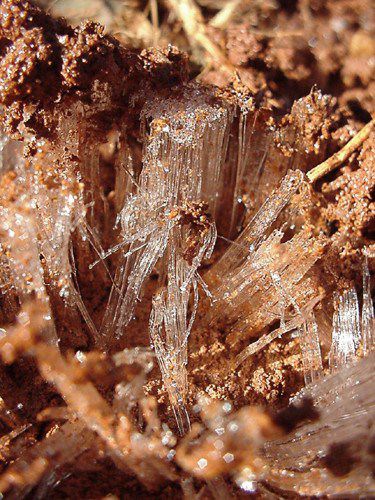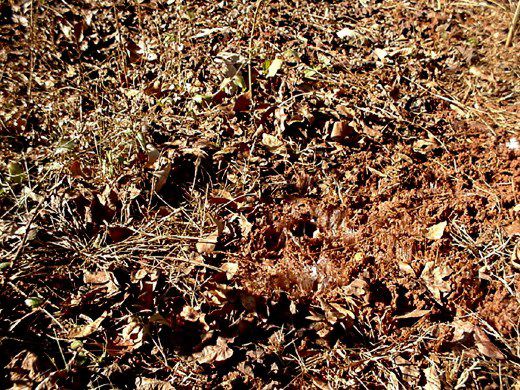|
|
|||
|
THIS WEEK at HILTON POND Installment #---Visitor # (Back to Preceding Week; on to Next Week) |
|
Frost Heave The final month of 2000 is turning out to be one of the coldest Decembers in recent memory at Hilton Pond Center, with half the days so far registering temperatures below freezing or even into the teens, and some daytime highs only in the low 30s. Hilton Pond has had ice along the edge on several mornings, but it hasn't yet frozen over completely. Our friends in Minnesota and New York may scoff at these "balmy mid-winter" conditions, but for us in the Carolina Piedmont it's pretty darned cold!  One of the most noticeable signs that it's frigid hereabouts is the crunching sound beneath our feet as we walk the trails at Hilton Pond Center. Most Decembers, we're more accustomed to the sound of rustling leaves, but this year brittle ice crystals have formed in the moist red clay (see photo above). When conditions are just right, these crystals elongate into transparent needles about two inches long and no more than an eighth of an inch in diameter. They sparkle in bright sunlight and even give off a luminous glow under a full moon. Ice needles look delicate and break easily when touched, but they also exert tremendous force while forming in the top layer of soil. Close examination reveals that nearly every needle is topped with a red clay cap, and where there are lots of needles, several square feet of half-inch-thick substrate have been thrust upward. This action, known as "frost heave," has great significance, for such perturbation of the earth is one of the forces that breaks up mineral soil and makes nutrients available for plants. Frost heave also creates tiny crevices in the clay into which plant seeds may tumble, and when the ice crystals melt, surface soil settles back down onto the seeds. Now underground, the seeds are protected from birds and small mammals as they wait to germinate next spring. The soil at upper left in the photo below was protected by grasses and their roots. Conversely, the area at right was disturbed when underground power lines were installed last spring at Hilton Pond Center, and nothing grew on the bare, hard-packed soil during our hot, dry summer. Since then, the bare area has been disturbed by frost heave and the substrate is in obvious disarray. The soil is loose enough for plants to get a seed-hold, so it's likely early successional flora will invade the bare area by next December--unless, of course, heavy spring rains erode away the fragmented soil and expose more hard-packed clay below, forcing plants to wait for another dose of winter frost heave.  |

